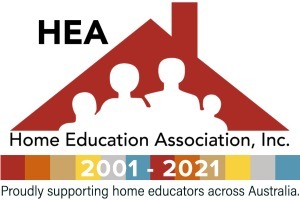The 5 t's. Tasks, Texts, Tutorials, Tutors and Talks
- HEA Committee

- Jan 31, 2023
- 7 min read

The 5 T’S: A User-Friendly Framework for Creating Home School Learning Plans
The 5 T’s is my own way of preparing my home school Learning Plans for my daughters and for the registration process. We use a wide array of each so as to keep things interesting for my children and for support for our home school journey. Our style is the Eclectic Style, which means we employ a wide range of philosophies and methods.
1. Tasks: any activity your child is immersed in, planned or spontaneous.
A task may be a single activity which doesn’t repeat, weekly gig, or a project that seems to have no end in sight (these I particularly love observing). A task involves the child actively participating in an activity. There may be a tangible product as a result or there may not be. Still working out how to capture those musical notes in a jar.
A simple task may be to learn how to use the washing machine. This is a skill for life so we consider it very important. As is washing up, cooking, cleaning, and shopping. A task may be learning a new song on the piano, cooking popcorn on the stove top, building a cubby (in the loungeroom – again?), writing a letter to nana, planting tomato seedlings, practising a dance routine, speaking Japanese around the dinner table, an online typing program, or painting mum a gorgeous Mother’s Day picture using fingers.
Tasks can be open ended or have a clear specific goal intended. They can occur naturally or be the result of elaborate planning. Tasks tend to be interests motivated, in that you find out what your child is really keen on now and go with that flow. This lends to the Natural Style of home schooling and even Unschooling.
When my youngest, Jade, was taken with Creative Writing for months on end, her task was to write, edit and publish. She entered a local writing competition too. When my eldest, Emily, was swept up with the novel ‘Little Women’ at fifteen, she decided to watch all three films, read and re-read the novel (in various shapes and sizes) and enjoyed letting me know the similarities and differences. Emily then asked for some writing activities based on the novel which I found online. When we spotted an antique chest of drawers on the road side, she just had to have it for her bedroom to feel that bit closer to Jo March. So cool!
When Jade was first into Tiny Houses at eleven years old, she chose to research floor plans with Architecture books and online sites, and visit homes. She studied her favourites then used the program Archicad (supported by her dad) to create the floor plan. Once complete, she printed it out and pinned it to the wall. This project took about a month and she was inspired every day to work on it including weekends and nights. She was intrinsically motivated as Emily was with ‘Little Women’.
Both girls are into Manga Art (clean versions thank you). They research by viewing hundreds of pieces of Art online and in books and then create their own works. This project is actually ongoing. Who knows when it may end. Maybe never. And that’s totally fine.
Providing evidence for your Recording: the end product, photographs of the process or end product, a written ‘observation’, a video recording, anecdotal notes.
2. Texts: include fact and fiction and are either audio, read or interactive.
Both fact and fiction have a place in the home school Learning Plan and come in the form of books (hard and soft cover); audio books; films; audio/visual feed, eg, YouTube, demo on Inventorium, etc.
Decide for each subject how you would like your child to have their education delivered. You do not need a text book for each KLA (although they do seem to assist with the rego process). I do hope for change. I always ask my children to actively participate in choosing their own texts. At The Book Warehouse in Coffs Harbour, I scan the shelves until something jumps out that I think would suit and then I ask my girls to read through a few pages and get a feel for how the text communicates with them. If they seem keen, I put the money down. For their novels, they don’t need me to scan. They know what they love and take time to read the blurb and a few pages first anyway.
As for text books, I particularly like ‘Back To Basics’ for Primary texts but am yet to find text books that are inspiring for teens. We don’t relate to boring black and white pages that read dry and dull. And we are not attempting to replicate school. But a few text books help guide us with our Learning Plan. Most text books have the answers provided so don’t worry if you can’t remember if volume is squared or cubed.
We also source reference books which spark enthusiasm to purchase. And we regularly borrow from the library. Joining one library gives you access to many libraries for books, films, resources, holiday programs, presentations, festivals, and saves you money on buying loads of books.
You can print out a list of all the books your children borrow via the online library log in. This you can show off at a renewal of registration meeting. Our lists go out the front door and down the path. In other words, we devour books.
An audio book is also a text. A graphic novel is a text. Writing letters back and forth with a grandparent is producing and reading texts. A film is a visual text in that the words come alive on the screen via voice. If you have keen audio/visual learners like I do then film is gold and there are so many genres to choose from. It doesn’t need to present like a documentary to be a valid visual text, although we do love David Attenborough and Rachel Perkins’ Indigenous Education documentary series. And reading information straight from an internet site is a form of a text too, eg, Permaculture For Kids: https://www.permaculturenorthernbeaches.org.au/permaculture-for-kids
Providing evidence for your Recording: physically showing the texts, photos of the texts, a print out of the books bought or borrowed, a list of websites visited.
3. Tutorials: any online platform of learning for your child.
These include learning platforms with the intention of educating a child. Think: Reading Eggs, Maths Online, Inventorium, Kahn Academy. Some you pay for monthly, annually and some are free. And some you can ask for a free trial. Be sure to let the administration know you are a home school family for a potential discount.
Often these platforms also provide parent access which means you can view which level your child is up to, what skills they are working on, etc. We used online platforms a few times over the years and we take our time to choose ones which we think will resonate.
Providing evidence for your Recording: a print out of the level or achievement, a print out of activities completed, a photo of the child while using the online platform.
4. Tutors: a teacher or educator you hire, typically weekly who has specialised knowledge.
Their fee will depend on their years of experience, qualifications and the time scheduled. You may need to factor in a fee for travel if they come to your home.
A tutor may work one on one or in groups. A coach is a type of tutor, a music teacher, a martial arts instructor, a math tutor, etc.
I am guided by my children in who they choose as their tutors as I find it to be an intimate experience for my child and I know how important it is for us all to know, like and trust our tutors. I am a teacher and facilitate classes for my girls in a group setting each week. I focus on Literacy and Numeracy, and other subjects which branch off naturally from whatever we deep dive into such as Drama and Indigenous Education.
Providing evidence for your Recording: a report written by the tutor, class photos, completed tasks, book work, project work, photos of excursions.
5. Talks: sharing and innately transferring knowledge, beliefs, values, skills and wisdom.
When a child is curious about a topic and along comes a specialist in their field of knowledge and experience who shares with enthusiasm, magic naturally unfolds.
Children are ever curious, enjoy asking questions, intrinsically search for meaning, and naturally long to apply the new found knowledge. Talking is a mode of learning with depth and the added bonus of bonding between the speakers. Slowing down the pace of life brings forth more time for families, friends and facilitators to speak with our youth and I believe it enriches all of us. Sharing knowledge, skills, and even attitudes is rewarding in and of itself. And it’s perfectly fine for a child to be expert in their field too. Home schooling has many benefits but one major one is more time for children to deep dive into their interest areas and become expert from young.
Our family finds it invaluable and ever rewarding to spend time together at dinner time chatting about our day. We all need to be heard, we all have a story to tell, and one of our primary needs according to Maslow’s Hierarchy Of Needs (1943, A Theory Of Human Motivation) is a sense of belonging. Still working on the transcendence level though. Scott Pape in his book, ‘The Barefoot Investor For Families’ can’t stress the benefits of dinnertime chats strongly enough.
Home schooling opens up time for quality family time and this is precious. Children grow up quickly. Providing many opportunities for sharing is a blessing for the child as you role model for them clear and cohesive speaking skills, active listening, time for processing, then provide opportunities for the child to apply the knowledge.
Providing evidence for your Recording: anecdotal notes on what you talked about will suffice, or a photo of a chat session in progress.
Rachel Faith is a teacher happily working out of the system, home school mum, and home school tutor of 15 years. Rachel has created Micro Classes Australia - job creation for teachers (via home schooling) and small group tailor-made classes for children aged 5 to 19.
For details visit www.microclasses.com.au




Comments